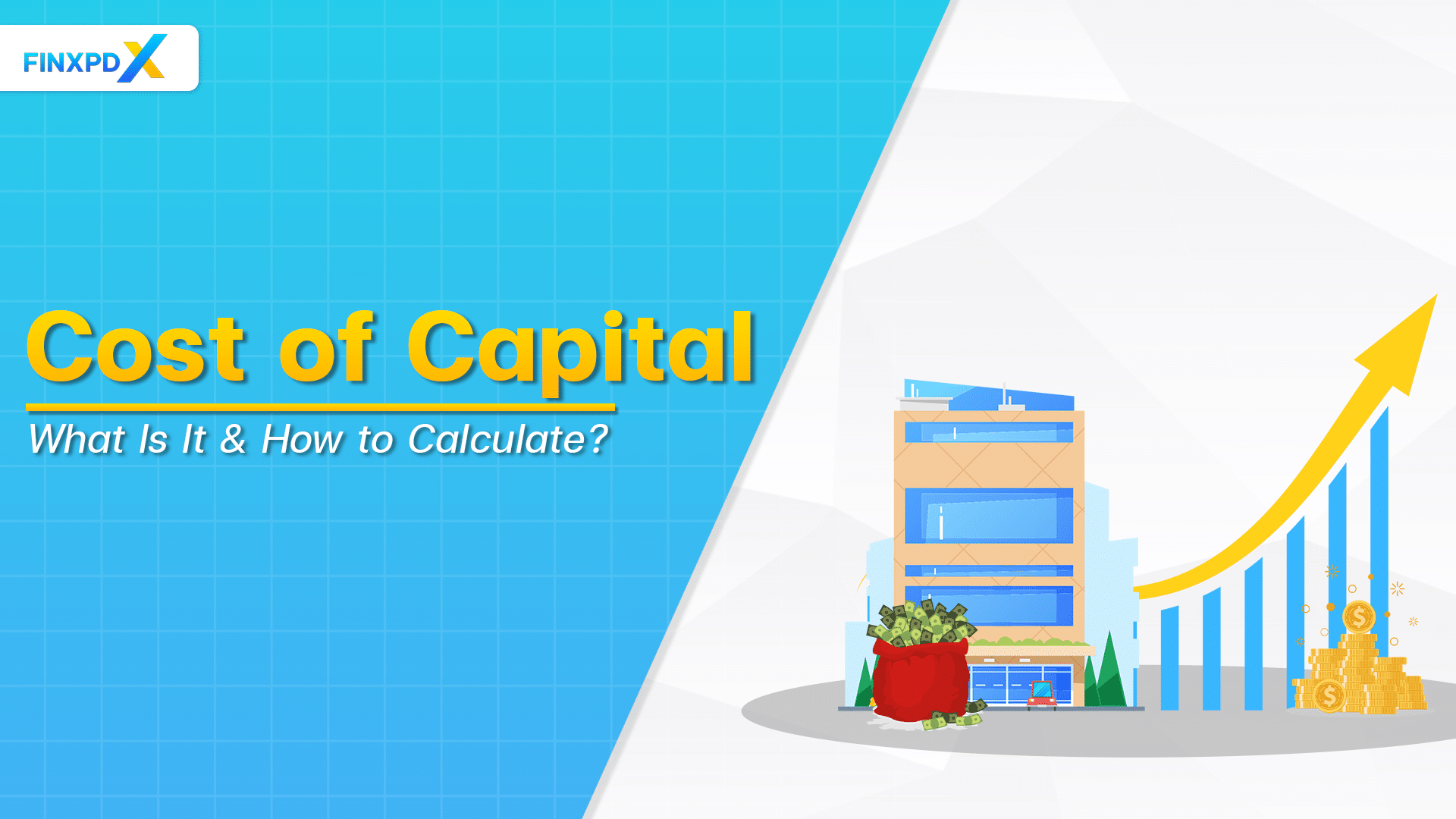In today’s complex financial landscape, the term “Cost of Capital” is an indispensable concept that plays a pivotal role in shaping business decisions. Understanding it is crucial for both financial experts and business leaders as it serves as a foundational metric to evaluate investment opportunities and guide financial planning.
This comprehensive guide aims to explain what is cost of capital, the components of cost of capital, types of cost of capital, significance of cost of capital, and practical ways to calculate it.
What Is Cost of Capital?
The cost of capital is essentially the rate of return that a business must achieve on its investments to maintain its current value in the market. Think of it as the minimum return rate that justifies investing resources in a project or business venture.
The calculation of this metric involves factoring in the costs associated with different forms of financing, such as debt and equity, to determine a weighted average. This weighted average becomes a crucial tool for business leaders when making strategic decisions about investments or financing.
Key Takeaways
- The cost of capital is a financial metric that represents the minimum return a company needs to generate to satisfy its investors and creditors.
- The cost of capital serves as a benchmark for a wide range of financial decisions, such as investments and capital budgeting.
- The weighted average cost of capital (WACC) is commonly used to calculate the overall cost of capital.
- A higher cost of capital generally indicates a riskier investment or project.
Significance of Cost of Capital
The significance of cost of capital is critical in business decision-making. It acts as a standard for evaluating investment prospects and assisting businesses in successfully allocating resources.
Furthermore, it aids in the construction of a balanced capital structure by assisting organizations in determining the appropriate mix of debt and equity. Finally, it is important in company valuations, particularly in scenarios such as mergers and acquisitions.
Components of Cost of Capital
The components of cost of capital are the different kinds of financial resources that a company relies on for its operations and growth. Generally, these are divided into debt and equity but can be detailed further into specific categories.
1. Cost of Debt
The cost of debt is the interest rate that a company is obligated to pay on its borrowed capital. It takes into account both the nominal interest rate and any tax benefits associated with debt financing.
2. Cost of Equity
The cost of equity represents the rate of return demanded by equity shareholders. This considers dividends, capital gains, and prevailing market conditions.
3. Cost of Preferred Stock
The cost of preferred stock includes the dividends that a company pays to its preferred stockholders.
4. Cost of Retained Earnings
The cost of retained earnings involves earnings not distributed as dividends but reinvested in the business. The rate of return on these reinvested earnings is also considered.
5. Weighted Average Cost of Capital (WACC)
The weighted average cost of capital (WACC) is an averaged rate calculated using the proportions of the above components to finance a company’s assets.
Types of Cost of Capital
The types of cost of capital can vary depending on the source and structure of the financing. Here’s a closer look at some of the key types:
1. Specific Cost of Capital
This type refers to the cost of each specific type of capital, such as debt, equity, and preferred stock. It is the rate of return required by each individual component of the capital structure.
2. Weighted Average Cost of Capital (WACC)
The calculation of WACC, determines the average rate a company is expected to pay its security holders to finance its assets, using a weighted average of the specific costs of different components
3. Marginal Cost of Capital (MCC)
Essentially showing the additional cost incurred for securing extra financing, the marginal cost of capital represents the cost of the last dollar of capital raised.
4. Incremental Cost of Capital
This type is similar to the marginal cost of capital but focuses more narrowly on the cost associated with a specific new project or investment.
5. After-Tax Cost of Capital
This type takes into account tax implications and provides a net cost figure relevant for evaluating investments on an after-tax basis.
How to Calculate Cost of Capital
Calculating the cost of capital is a foundational skill in finance. Here, we’ll break down the steps in more detail:
1. Calculate the Cost of Debt
The cost of debt is the after-tax rate at which the company borrows money. To find this:
- Determine the annual interest payments the company makes.
- Divide these interest payments by the total debt.
- Multiply by (1 – Tax Rate) to account for tax benefits.
Formula:

2. Determine the Cost of Equity
The cost of equity represents the returns required by equity shareholders.
- Find the risk-free rate, usually based on government bond yields.
- Identify the beta of the stock, which measures its volatility compared to the market.
- Use the expected market return, often based on historical data.
Formula:

3. Find the Cost of Preferred Stock
If applicable, the cost of preferred stock is a component.
- Calculate the annual dividends paid on preferred stock.
- Divide this by the current market price of a share of preferred stock.
Formula:

4. Consider the Cost of Retained Earnings
Although reinvesting retained earnings does not involve a direct out-of-pocket cost, they carry an opportunity cost.
- Determine this using either the CAPM model or by examining dividend growth.
5. Compute the Weighted Average Cost of Capital (WACC)
The WACC encapsulates all the different types of capital costs into one average rate.
- Weight the cost of each component by its proportion in the company’s capital structure.
- Sum these weighted costs to find the WACC.
Formula:

⚠️Tip : For the most precise cost of capital estimates, always rely on current and relevant data.
Conclusion
The cost of capital is crucial in the finance world, serving both businesses and individual investors. This key metric helps people make smart choices when investing or planning business growth. It serves as a standard for making various kinds of financial decisions, from selecting the right investment opportunities to crafting long-term business plans.
Understanding the cost of capital is crucial for those deeply involved in finance, from seasoned analysts to financial beginners. However, mastering its calculation and meaning can offer a competitive advantage in investing or business management.
FAQs
The cost of capital is the rate of return a company needs to earn on its investments to satisfy its shareholders and lenders. It helps gauge the minimum performance required for a company’s projects and investments.
To calculate the cost of capital, you use the weighted average cost of capital (WACC) formula. It combines the cost of debt, equity, and sometimes preferred stock to give an average cost.
The cost of equity is the return required by shareholders, while the cost of capital
includes the return required by both shareholders and debt holders. The latter is a more comprehensive measure.
Key determinants include interest rates, tax rates, the risk level of the company, and market conditions.
Certainly, if a company has a cost of debt at 3.5%, a cost of equity at 8.2%, and a cost of preferred stock at 2000%, with respective weights of 50%, 45%, and 5%, the WACC would be 105.44%.
Related Articles:
- Net Asset Value (NAV): A Vital Metric in Investment
- What Are Treasury Bills & How to Invest in Them?
Read more: Funds & Loans








